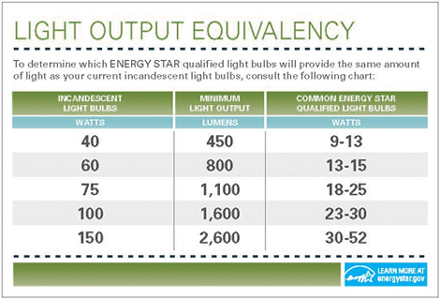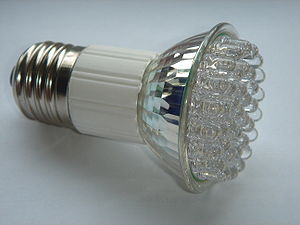 We’ve been gradually, as the prices dropped, been converting our home to LED lightbulbs.
We’ve been gradually, as the prices dropped, been converting our home to LED lightbulbs.
A few years ago, we jumped on the CFL bandwagon. It was one of our earliest stories on this blog, back in 2006. And we went hunting for dimmable CFLS.
We were convinced at the time, that CFLs would continue to improve, as would the dimmable type. However, dimmable CFLs burn out, and don’t quite have the dimming we’d like.
The common complaint about many CFLs is that they do not come up at full brightness, and the color output doesn’t quite match incandescents.
LEDs, however, have none of these shortcomings, although they can be highly directional light. They use less energy, they are typical dimmable, their color performance is more like an incandescent bulb and they last longer. The last longer part is relative, however.
Early models haven’t lived up to their longevity, by most reports. We haven’t had the decade to test them out, but Gadget Wisdom Headquarters is now 90% LED powered. The holdouts had been PAR20 and PAR30 bulbs, which were still $30 a piece. But the local Costco is selling 75 watt equivalent PAR30s for only $15. We got two to test, and will be expanding.
We also have a fixture that uses bulbs with a E12/candelabra base, and it is harder to find 40-60 watt equivalents with this base. They will come, we’re certain. They are hard to find in CFLs as well.
In several rooms, we’ve installed LED strip lighting from Ikea. They offer two models, the more economical Ledberg, and the more flexible Dioder. The Ledberg is one long strip, the Dioder can be installed as four separate strips, and other configurations. It is perfect for display areas, bias lighting, and undercabinet needs.
One of the biggest problems we’ve had was solved recently, trying to understand lumens to traditional watt ratings. The above diagram was shown to us, which has been very useful.
If you are reluctant to spend a lot, you may be able to justified a few strategically placed $10 LED bulbs in certain fixtures, which is the way we started. Either way, it is where we are all going eventually
Related articles
- Are Your CFL Lightbulbs Buring Out? Here’s Why (dawnrajda.wordpress.com)
- Find the Equivalent Wattage of CFL Light Bulbs with This Cheat Sheet [Household] (lifehacker.com)
- Are You Ready for the Incandescent Light Bulb Ban? (bargaineering.com)




